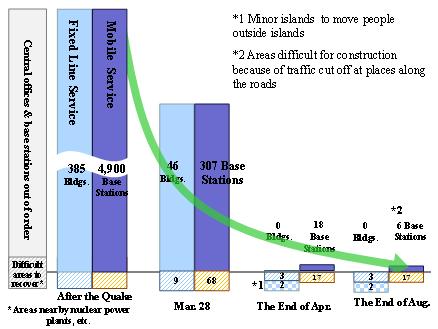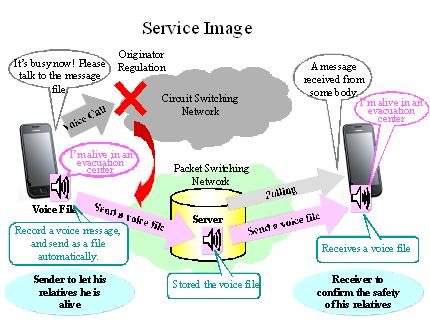|
|
|
� MAIN PROGRAMME � |
|
Abstracts |
Welcome Host: Francis William Petersen (Dean, Faculty of Engineering & Built Environment, University of Cape Town, South Africa)
The fourth in the Kaleidoscope Conference Series will be held for the first time on African soil, and the University of Cape Town is proud to host the Conference in collaboration with the South African Department of Communications.
When focusing on the theme of the Conference, the value that the multi-disciplinary aspects of information and communication technologies (ICTs) could add to human centred systems is immense. The connection between humans and machines will need focused innovation, and the progressive developments in broadband networks can facilitate the better understanding of such interface. It is indeed in Africa where the challenge for a multi-disciplinary approach is critical.
It is not only about access to ICTs which have high-speed characteristics, but it is also about accountability and security to applications and end users.
In the context of Africa, ICTs need to be reliable and affordable, and I will explain how to address these challenges appropriately. |
Keynote speech: 2020: The Ubiquitous Heterogeneous Network - Beyond 4G. Rufus Andrew (Managing Director, Nokia Siemens Networks, South Africa)
The demand in mobile broadband
communication continues to increase
exponentially, fuelled largely by the
proliferation of smarter and smarter
devices. Smartphones, superphones, and
tablets with powerful multimedia
capabilities and applications are
becoming increasingly popular and are
creating new demands on mobile
broadband.
This trend is expected to increase in
momentum over the next decade and will
be further fuelled by the arrival of
billions of billions of machine devices
and related machine-to-machine (M2M)
applications and human to machine
communications. As the interfaces and
capabilities of mobile devices start
accommodating broader radio-frequency
(RF) capabilities and technologies such
as RFID (radio-frequency
identification), mobile networks will
play an increasing role in the
backhauling and fronthauling of signals
that will be connected to the ’Internet
of Things’
These factors are adding up to create an
exponential increase in traffic volumes,
number of transactions, and complexity
of processing. Extrapolations of current
growth trends predict that networks need
to be prepared to support up to a
thousand fold increase in total mobile
broadband traffic by 2020. This figure
assumes a ten-fold increase in broadband
mobile subscriptions and up to 100 times
higher traffic per user
To meet such demand, the industry needs
to look ahead of today’s technology
horizon to create ‘Beyond 4G’ Networks.
In order to successfully achieve this,
industry collaboration is needed to
deliver on the following requirements.
1. Ten times more spectrum will need to
become available for mobile broadband
2. Networks will need to use spectrum
ten times more efficiently than existing
mobile broadband technologies
3. Networks will require ten times more
base stations
This presentation looks in detail at
these requirements with possible
solutions for the ‘Beyond 4G’ Network.
Finally we look at the impact of the
‘Beyond 4G’ Technologies bridging or
further entrenching the Digital Divide. |
Keynote speech: Recovery from the Communication Disturbance by the Tohoku Earthquake and Actions toward the Future.
Hirofumi Horikoshi (Technology Planning Department, NTT Corporation, Japan)
The Tohoku Earthquake and the successive tsunami on 11 March 2011 crashed down the significant areas of NTT’s communication services. 385 central offices, 4,900 base stations of our cellular network service and 150 million telephone circuits became out of order. This talk shows: (1) how NTT made efforts for the recovery of its network, (2) how to keep communication services in the disaster regions, (3) how to provide livelihood support to the sufferers, and (4) the possible future action plans.
Despite many aftershocks, where some of them were over a magnitude of seven, as shown in Fig. 1, the communication system was recovered by the end of April, except 18 base stations. Even in the areas surrounding the nuclear power plants, people could communicate with each other. The major means for recovery were (i)new constructions or replaces of power supplies as well as communication facilities in central offices, (ii)reinstallations of transmission paths, (iii)repairing entrance circuits for base stations, (iv)expanding cellular zones, etc.

Fig. 1 Recovery of the Communication Systems from the Disaster
3,600 public telephone booths with portable satellite links, 31 automobiles equipped with base station, 900 satellite cell-phones, 2,100 mobile phones and 410 battery charge booths were provided free of charge. 336 free internet corners, free WiFi services as well as 670 free tablet terminals were also provided for the internet connectivity. The Web page was launched to show the map of recovered regions. Labor-intensive operations were also made. For the people in evacuation centers, we sent messengers to receive messages about the well-being of those people and to transfer them to the relatives, the mass media, and the Web page.
Now several actions are planned toward fault-resilient network infrastructure. The first one is to make the power supply of base station uninterruptible. For this aim, 1,900 base stations will have long life batteries such as 24 hours, which cover 65% of the population. The second is to construct 100 large zone base stations in the densely-populated areas, which cover 35% of the population of Japan. The third is to increase the number of physical routes for each trunk circuit, to introduce the distribution of network functions, to improve waterproof central offices, etc.
From the lessons learned at this disaster, we will introduce a new voice message service as shown in Fig.2, which sends a voice to the destination as a recorded file to avoid the congestion of telephone service. It is very useful to send a message as “I’m alive!” to our relatives at a disaster, and will be one of the most important life saving tools.

Fig.2 Voice Mail System suitable to communications at a disaster
|
Keynote Speech: The fully networked human-ity? - Innovations for the un-networked human
Alfredo Terzoli (Rhodes University, South Africa)
There is a growing perception that the many divides that fracture the humankind are problematic. Divides do generate instability (to the point of revolutions or wars) and have obvious inefficiencies, deriving from the fact that, as humans our (collective or social) strength is in the group, not in the individual.
One such divide is between those that are connected to the global information cloud, the Internet or those that are not. On this divide, often referred to as ‘digital divide’, millions of words have been spent, but without any major concrete change: the problem is still with us, no matter how clich�d it sounds by now.
Interestingly enough, this divide runs along others, such as the one between the rich and the poor, and the educated and the uneducated. Maybe bridging one divide can help bridging the others? What type of innovations do we need to start bridging the digital divide for real - and so potentially other divides? What systems should be in place, what standards, what practices? This talk will try to answer these questions focusing on an ongoing experiment in Dwesa (Wild Coast, South Africa), the Siyakhula Living Lab, at the centre of a rich innovation ecosystem.
|
The disappearance of Telecommunications and the fading of boundaries among atoms and bits
Roberto Saracco (Telecom Italia, Italy)
Forecasting 50 years in areas where technology evolution dominates is impossible. However, some trends that have been manifested in the last fifty years can tell us something. It would be a mistake to look at these trends and simple prolong them into the future because we are reaching some singularity points where what used to be true may no longer apply.
The goal of the talk is to reflect on some of these singularity point and provide some guess of what may lie beyond their horizons.
What means to have unlimited pervasive bandwidth? What means when there is no separation between an object and its representation, when it becomes irrelevant to distinguish between atoms and bits? How will our physical limits, as human beings, constrain the exploitation of what is beyond our limits? |
Atlas of Technology Advance
Rias J van Wyk (Technoscan Centre, USA)
Taking a “Jules Verne View” of the management of technology (MOT), we expect three developments in the coming decades: (i) A uniform technological language to rationalize the various technological dialects that are in use at present. (ii) An atlas of technology based on the uniform technological language (iii) The emergence of a “science of technology” as a coherent discipline.
The atlas of technology will be used in three applications. To track technological evolution, to structure technology foresight, and to construct an Omega map of achievable technological performance. An example of each application will be covered in the presentation. |
|
� TOP �
|
|
� MAIN PROGRAMME � |
|
|
|



